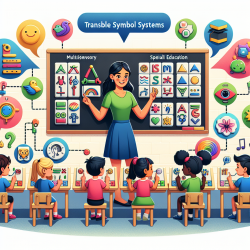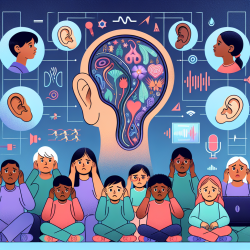Once upon a time, in the not-so-distant past, the idea of delivering therapy through a screen was as fanciful as having a pet unicorn. Fast forward to today, and telepractice isn't just a reality; it's a burgeoning field that's transforming the way mental health professionals work in schools. But let's be honest, transitioning from traditional face-to-face sessions to virtual therapy can feel a bit like swapping your reliable old car for a spaceship. It's exciting, sure, but also...how does this thing work again?
For those of us entrenched in the world of school-based therapy, telepractice has emerged as the unsung hero we never knew we needed. It's like the superhero of therapy modalities, swooping in to save the day when distance, time, and resources conspire against us. And yet, despite its growing popularity, there's still a hint of mystery surrounding it. How does it foster connection? Can it really be as effective as in-person therapy? And most importantly, can it make paperwork any less tedious? (Spoiler alert: No, nothing can make paperwork less tedious. Sorry.)
Let's start with the basics. Telepractice, or the delivery of therapy services via technology, isn't just a makeshift solution for when you can't be in the same room as your student. It's a legitimate, evidence-based approach that's been shown to be just as effective as traditional methods for many types of therapy, including speech therapy telepractice. Yes, you heard that right. You can help a child articulate their 's' sounds without ever being in the same zip code. Welcome to the future, folks.
But what about building that all-important therapeutic relationship? Can we really connect with students through a screen? The answer, much to the surprise of skeptics, is a resounding yes. It turns out, kids today are pretty adept at forming connections digitally (who knew?). With the right approach, telepractice can offer a uniquely intimate window into a child's world. It's not uncommon for therapists to meet pets, see bedroom decorations, and get introduced to family members—all of which can provide invaluable context and deepen the therapeutic bond.
Now, let's address the elephant in the virtual room: the humor in mishaps. Because, let's face it, teletherapy sessions don't always go according to plan. There's the inevitable tech glitch that turns your voice into a robot's, the unexpected cameo appearances by siblings (or pets, or both), and the occasional internet outage that leaves you staring at a frozen screen. But here's the thing—these moments of unpredictability can actually be therapeutic gold. They offer real-life opportunities to model flexibility, problem-solving, and humor. Plus, they're a reminder that therapy, like life, doesn't have to be perfect to be effective.
Of course, telepractice isn't without its challenges. Ensuring privacy and confidentiality can feel like a high-wire act, and navigating the technological landscape requires a certain level of digital literacy (or at least, a really good IT support team). But the rewards—increased accessibility, flexibility, and the opportunity to provide support exactly when and where it's needed—far outweigh the hurdles.
For those of us who've made the leap to virtual therapy, the journey has been eye-opening. We've discovered that you can, in fact, conduct a meaningful therapy session in your slippers (though we'd recommend dressing professionally from the waist up). We've learned that creativity is our greatest asset, and that telepractice opens up a whole new world of therapeutic tools and resources. And perhaps most importantly, we've seen firsthand the impact that our work can have, regardless of the medium.
So, to my fellow mental health professionals working in schools, I say this: embrace the chaos, the unpredictability, and the occasional technical glitch. Because in the grand scheme of things, they're just small bumps on the road to making a significant difference in the lives of our students. Telepractice may not be the traditional path, but it's a path filled with potential, growth, and yes, a fair amount of humor. After all, who needs a pet unicorn when you have the magic of virtual therapy at your fingertips?
In the end, telepractice is more than just a method of delivering therapy; it's a testament to our adaptability and commitment as therapists. It proves that no matter the obstacles—be they physical distance or a global pandemic—we can find innovative ways to support and connect with our students. And if that's not worth a chuckle and a contented sigh, I don't know what is.










